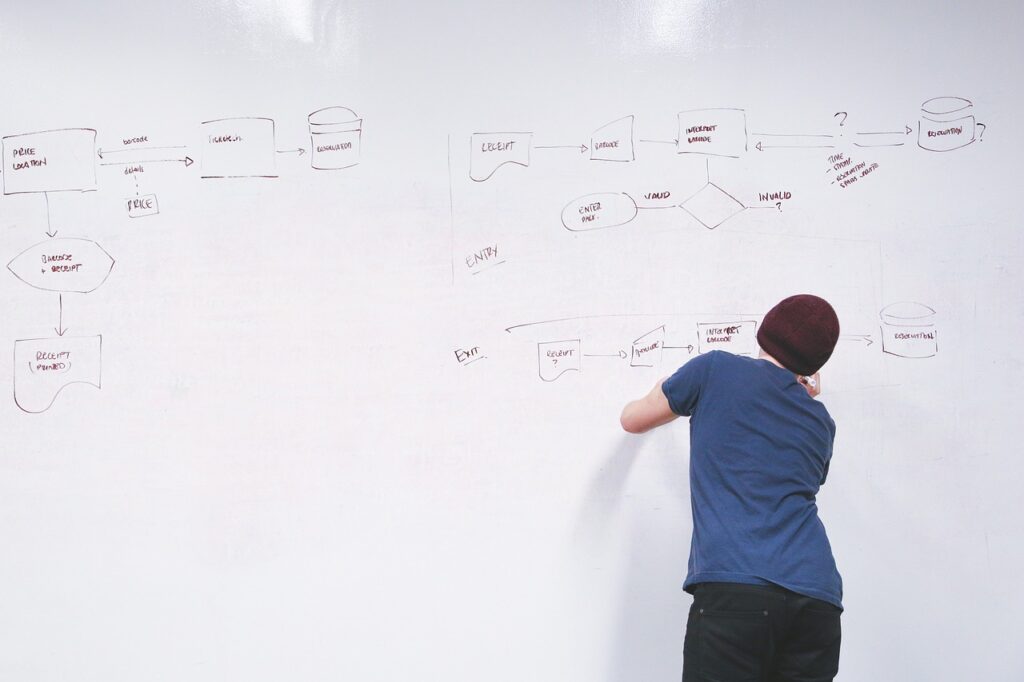Selecting the Right Software for Project Management
In today’s fast-paced world, choosing the right software for managing software projects is very important. This blog provides guidance for enterprise managers and project leaders on how to select software that fits their needs. We will look at key features, compare different options, and review popular software available today. Understanding how to manage software projects effectively helps teams work better together and meet deadlines.
Understanding Software Project Organization and Management
Software project organization involves how teams work together to reach project goals. Here are some key concepts:
Roles and Responsibilities: Each team member has specific tasks. Clear roles help avoid confusion.
Communication: Good communication is key. Use clear channels for sharing updates and feedback.
Project Management Methodologies: Different methods like Agile, Scrum, and Waterfall guide how projects are run. Each has its own strengths for different types of projects.
Tracking Progress: Use metrics like burn-down charts and velocity to measure progress. This helps teams stay on track.
Integration with Version Control: Combining project management software with version control systems helps teams collaborate smoothly.
Organizational Culture: The tools chosen should fit the team’s working style and culture.
Stakeholder Involvement: Engaging stakeholders is crucial. Their input can shape project direction and success.
Understanding these concepts lays the foundation for selecting effective software solutions.
Key Features to Look for in Management Software
When selecting project management software, consider these essential features:
Task Management: The software should allow teams to assign and track tasks easily.
Resource Allocation: It should help manage team members’ time and skills effectively.
Time Tracking: Track how long tasks take to manage deadlines better.
Collaboration Tools: Features like real-time chat and file sharing improve communication.
Reporting and Analytics: Look for tools that provide insights into performance and productivity.
Customizable Dashboards: Dashboards should be adjustable to meet different project needs.
Integration Capabilities: The software should connect with other tools like CRM systems and cloud storage.
User-Friendly Interface: A simple design helps teams adopt the software quickly.
Mobile Access: Ensure the software can be used on mobile devices for remote work.
These features enhance team collaboration and project efficiency.
Comparative Analysis of Popular Software Solutions
When comparing software solutions, focus on the following aspects:
Strengths and Weaknesses: Analyze how each
软件项目组织与管理软件选型全攻略:功能对比与最佳实例
Understanding Software Project Organization and Management
软件项目组织涉及团队成员的角色和责任。明确的沟通渠道至关重要。项目管理方法论,如敏捷(Agile)、Scrum 和瀑布(Waterfall),对软件选择也有影响。使用烧尽图(burn-down charts)和速度(velocity)等指标跟踪项目进度是必要的。
集成项目管理软件与版本控制系统可以实现无缝协作。组织文化对软件项目管理的影响也很大,工具需要与团队动态保持一致。利益相关者在项目管理流程中的参与同样重要。
Key Features to Look for in Management Software
选择软件项目管理工具时,需关注以下关键功能:
任务管理:帮助团队分配和跟踪任务。
资源分配:确保有效利用团队资源。
时间追踪:监控时间使用情况。
协作工具:实时聊天和文件共享功能可提高团队沟通效率。
报告与分析:提供项目表现和团队生产力的洞察。
可定制仪表板:根据不同的项目需求和利益相关者要求进行调整。
集成能力:与其他工具(如CRM系统和云存储)整合以简化工作流程。
用户友好界面:提高团队采用率,减少培训时间。
移动访问:支持远程团队和随时随地的项目管理。
Comparative Analysis of Popular Software Solutions
对市场上领先的软件解决方案进行详细比较。每款软件的功能、用户体验和可扩展性各有优缺点。客户支持和社区资源在选择过程中也很重要。了解定价模式(如订阅与一次性费用)可以帮助组织做出明智的财务决策。
分析用户评价和反馈,提供每款软件性能的平衡视角。关注软件开发的趋势,如人工智能和自动化功能,这些都可能影响未来的选择。
Best Practices for Software Selection
选择管理软件时,组织应遵循结构化的步骤:
1. 需求评估:识别具体需求和目标。
2. 利益相关者参与:确保各方认可和与业务目标一致。
3. 试用或演示:评估软件的可用性和功能。
4. 评分系统:客观比较不同软件选项。
5. 供应商声誉:选择可靠的软件解决方案。
6. 持续培训与支持:确保软件实施后的最大收益。
Real-World Case Studies
展示各行业成功实施软件项目组织与管理的案例研究。分析特定软件如何解决组织面临的独特挑战,并促进项目成功。讨论可衡量的成果,如提高效率、降低成本和增强团队协作。
通过案例学习,为未来的软件选择和实施策略提供指导。探讨公司如何调整项目管理方法以利用所选软件的优势。提供软件实施对组织表现和项目成果的长期影响的见解。



